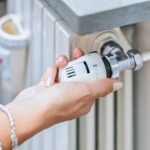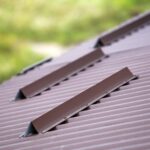In the often overlooked world of piping infrastructure, the integrity and efficiency of your system hinge on one critical component: the pipe hanger installation. For professionals in settings ranging from industrial facilities to commercial kitchens, understanding the best practices for installing support systems can significantly impact operational efficiency and safety. The nuances of pipe hanger technology can make or break your facility’s piping system, an aspect that demands attention and precision.
- Explore the fundamentals of pipe hanger installations, delving into the types and materials crucial for supporting different pipes effectively.
- Gain insights into the key components of pipe support systems, such as hangers, clamps, and brackets, and understand their vital roles in the installation process.
- Discover how environmental factors influence pipe hanger installations, with best practices tailored for commercial kitchens and industrial settings.
By the end of this exploration, you will be equipped with the knowledge to ensure the longevity and safety of your piping infrastructure. This guide will empower you to optimize your facility’s operational efficiency through informed decision-making and expert advice. Dive in, and transform your approach to pipe support systems.
Understanding Pipe Hanger Installation: Support System Best Practices
Pipe hanger installations play a critical role in ensuring the proper support and stability of piping systems. These installations are essential in preventing undue stress on pipes, which can lead to leaks, breaks, or even complete system failure.
In exploring the fundamentals of pipe hanger installations, it is important to consider the different types of systems available. These systems generally include fixed, spring, and adjustable hangers, each designed to support specific pipe arrangements and accommodate movement or thermal expansion.
The materials used for pipe hangers and supports are also vital. Common materials include stainless steel and galvanized steel, both chosen for their durability and ability to withstand environmental stressors. Stainless steel is especially valued for its corrosion resistance, making it a preferred choice in industrial and commercial settings.
Understanding these core aspects helps ensure that the appropriate support systems are implemented, thereby maintaining piping integrity and operational efficiency in various environments.
Key Components of Pipe Support Systems
The effectiveness of a pipe support system heavily relies on the quality and suitability of its components. One of the primary components is the pipe hanger, which serves to suspend pipes and alleviate strain caused by the weight of the piping content.
Clamps are another crucial element. They are used to secure pipes to structural components, providing a fixed support or guiding the direction of the pipe run. Clamps ensure that the pipes remain in place, even under operational stress.
Brackets work alongside hangers and clamps, offering additional support and stability. They are particularly useful in scenarios where pipes need to be mounted against walls or ceilings.
These components collectively function to maintain the mechanical integrity of pipe systems. Each plays a specific role in the installation process, contributing to the reliable operation of a building’s plumbing and infrastructure.
Pipe Hanger Installation: Support System Best Practices in Varied Environments
Pipe hanger installations are pivotal to maintaining the integrity and efficiency of piping systems, but their performance can greatly vary depending on environmental factors. Recognizing these variations is crucial to ensuring the longevity of your installations.
For instance, in commercial kitchens, moisture and heat are constant challenges. It is essential to use stainless steel hangers that can resist corrosion and temperature fluctuations. Installing insulated supports can further prevent condensation, which is a common issue in these environments. Additionally, ensuring that pipes are correctly aligned and supported can prevent undue stress on connections, reducing the risk of leaks.
In industrial facilities, the scale and complexity of pipe systems demand robust support solutions. Here, the choice of materials often comes down to load-bearing capacity and environmental exposure. For high-temperature applications, utilizing heat-resistant materials like carbon steel can significantly improve system reliability.
Moreover, vibration is a frequent consideration in industrial settings, which can lead to premature wear or failure of supports. Implementing anti-vibration mounts and flexible hangers can mitigate these issues. Proper planning during installation to allow for thermal expansion and contraction will further enhance system resilience.
Ultimately, understanding these environmental components and applying best practices, tailored to each unique setting, allows facilities to maintain efficient and secure pipe systems. Prioritizing reliable materials and strategic installation can significantly extend the lifespan of your piping infrastructure.
Frequently Asked Questions about Pipe Hanger Installation
What is the purpose of pipe hangers?
Pipe hangers support pipes, ensuring they stay in place and reducing stress that can lead to damage.
Which materials are commonly used for pipe hangers?
Common materials include steel, stainless steel, and plastic for varying load capacities and environments.
How do environmental factors affect pipe hanger installation?
Environmental conditions like temperature and humidity influence material choice and installation methods to prevent corrosion and other issues.
What are key components in a pipe support system?
Key components include
- hangers
- clamps
- brackets
each having specific functions within the support system.
What are best practices for installing pipe hangers in commercial kitchens?
Ensure proper spacing and material choice to handle specific heat and moisture levels typical in commercial kitchens.
Why is it important to follow best practices in pipe hanger installation?
Following best practices ensures longevity and safety of the piping infrastructure, optimizing operational efficiency.





